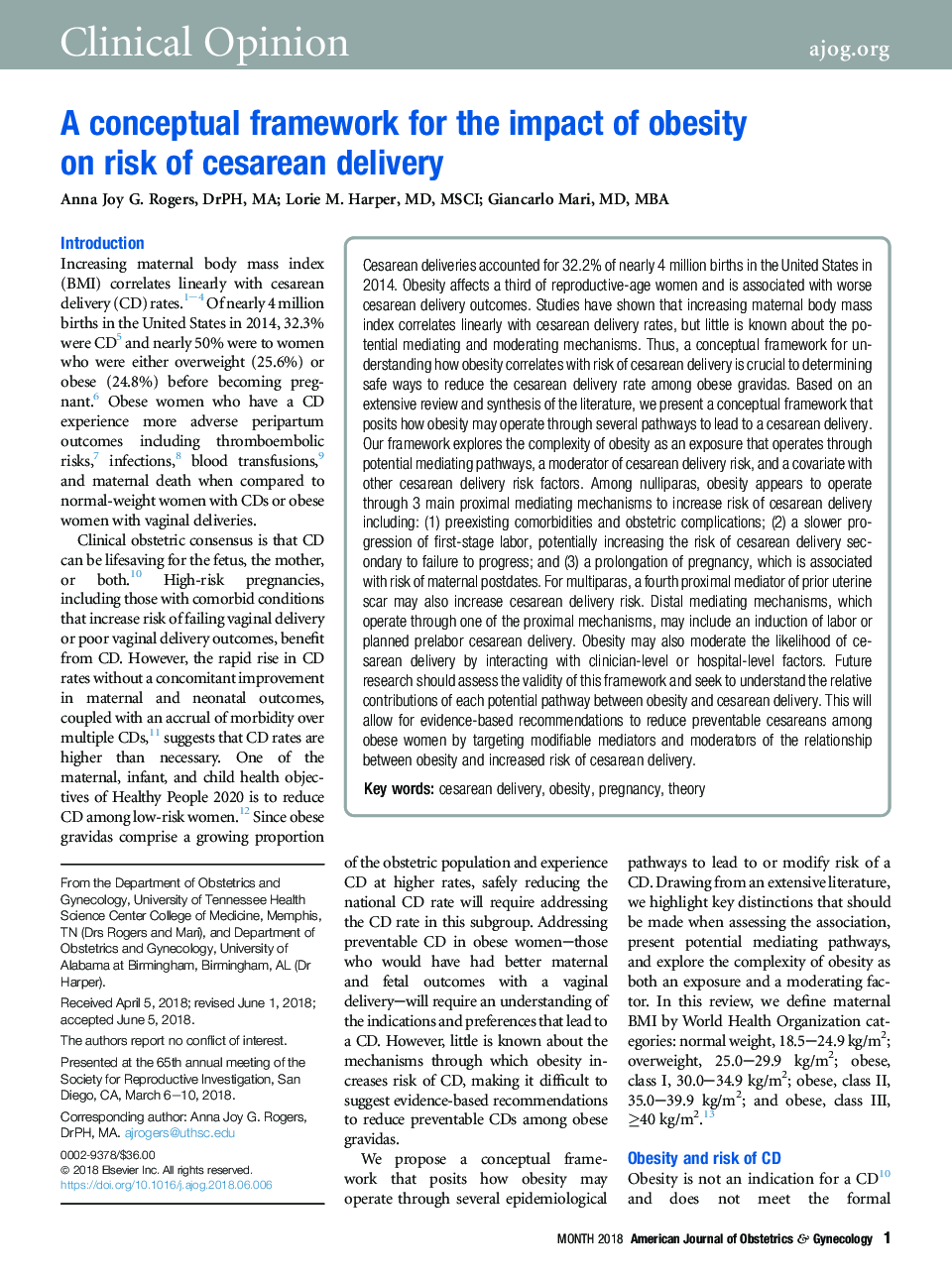| Article ID | Journal | Published Year | Pages | File Type |
|---|---|---|---|---|
| 11018290 | American Journal of Obstetrics and Gynecology | 2018 | 8 Pages |
Abstract
Cesarean deliveries accounted for 32.2% of nearly 4 million births in the United States in 2014. Obesity affects a third of reproductive-age women and is associated with worse cesarean delivery outcomes. Studies have shown that increasing maternal body mass index correlates linearly with cesarean delivery rates, but little is known about the potential mediating and moderating mechanisms. Thus, a conceptual framework for understanding how obesity correlates with risk of cesarean delivery is crucial to determining safe ways to reduce the cesarean delivery rate among obese gravidas. Based on an extensive review and synthesis of the literature, we present a conceptual framework that posits how obesity may operate through several pathways to lead to a cesarean delivery. Our framework explores the complexity of obesity as an exposure that operates through potential mediating pathways, a moderator of cesarean delivery risk, and a covariate with other cesarean delivery risk factors. Among nulliparas, obesity appears to operate through 3 main proximal mediating mechanisms to increase risk of cesarean delivery including: (1) preexisting comorbidities and obstetric complications; (2) a slower progression of first-stage labor, potentially increasing the risk of cesarean delivery secondary to failure to progress; and (3) a prolongation of pregnancy, which is associated with risk of maternal postdates. For multiparas, a fourth proximal mediator of prior uterine scar may also increase cesarean delivery risk. Distal mediating mechanisms, which operate through one of the proximal mechanisms, may include an induction of labor or planned prelabor cesarean delivery. Obesity may also moderate the likelihood of cesarean delivery by interacting with clinician-level or hospital-level factors. Future research should assess the validity of this framework and seek to understand the relative contributions of each potential pathway between obesity and cesarean delivery. This will allow for evidence-based recommendations to reduce preventable cesareans among obese women by targeting modifiable mediators and moderators of the relationship between obesity and increased risk of cesarean delivery.
Related Topics
Health Sciences
Medicine and Dentistry
Medicine and Dentistry (General)
Authors
Anna Joy G. DrPH, MA, Lorie M. MD, MSCI, Giancarlo MD, MBA,
